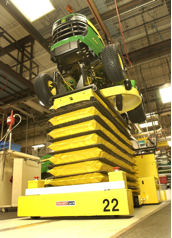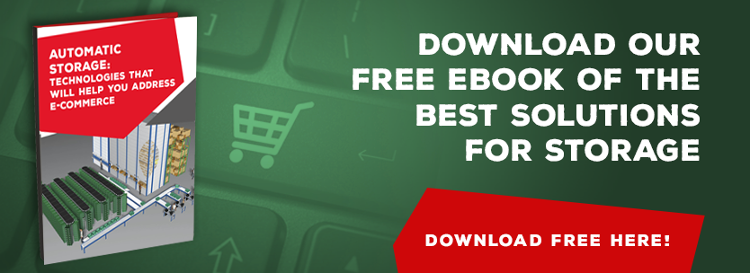 John Deere is considered the most important Company in agricultural equipment globally. Years of service consolidate it as one of the oldest industrial companies in the United States.
John Deere is considered the most important Company in agricultural equipment globally. Years of service consolidate it as one of the oldest industrial companies in the United States.
The Company has a high level of sophistication in the selection and implementation of material handling systems in all its facilities. They currently use different technologies, such as: roller conveyors, AGVs, AGCs. Power & Free systems, and others. However, they did not always have the best installed technology.
Here's one of our biggest success stories with the implementation of AGCs SmartCart:
How did the issue arise?
Responsible team of the Company evaluated conveyors that were used at the Horicon factory. They created a matrix to compare the advantages and disadvantages of the different systems considering cost, delivering, efficiency of the work force and ergonomic requirements.
Production area had been working for the last 20 years with a fleet of more than 50 AGVs in the manufacture of lawn tractors. These systems had been already in service for more uptime that average life time, generated additional costs of maintenance and high price of the spare parts to be replaced.
What was the solution?
After reviewing all options in the market, Deere´s analysts decided to run some tests with other systems that could solve general issues of uptime, being the new AGC SmartCart the one chosen to perform this tests.
To watch this equipment performing, the manager of the Company made two visits to the JCI Automotive facility in Ontario, which had several SmartCart lines running. The manager was impressed with the flexibility of the units, which were guided with a magnetic tape embedded in the ground. Due to the single configuration of some of the Deer’s production lines, SmartCart seemed to have a solution.
As for Dave Werkheiser, an engineer at Horicon, the flexibility of SmartCart was dramatic: "The advantage of picking up magnetic tape and changing the design in minutes allows us to change a whole line in just a weekend".
After seeing the functionality of these vehicles, Deere ordered a SmartCart unit as a first step in design approval. Subsequently, six additional cars were added for the construction of prototypes. For the following months, there were 56 more AGC's. Safety tests, component repair procedures and the establishment of entry stations were completed, with the installation of the SmartCart line with 76 cars. According to Werkheiser, "All ergonomic problems were greatly reduced."
As with any automated process, during the startup and debugging of the initial phase there were many unexpected problems, for example: the signal was lost, there were problems with the speed sensor, an optical follow-up blocking occurred. However, once the problem was identified and with the help of the support engineers, these technical problems were solved immediately.
What was the result?
The company has now 80 cars at the Horicon facility. Results have been successful, thanks to the flexibility of the purchase in line to make changes and by the extreme ease of the installation.
"These implements reached their maximum level throughout the company. Now many of the plants are looking for alternative solutions to their material handling systems, including those in our agricultural division, "says Dave Werkheiser.
Do not let the quality of your work or your competitiveness be harmed by not implementing better automatic solutions. Learn more about the functionality of AGCs and AGVs.
Approach to our engineering team and find out what logistic automation can do for your business.



